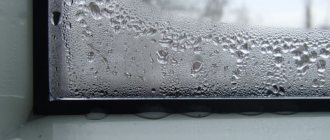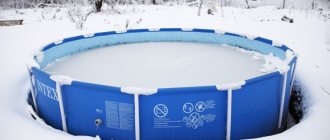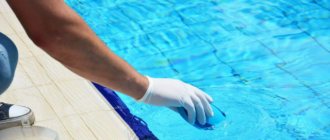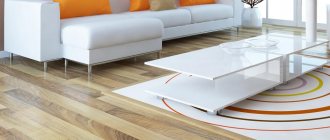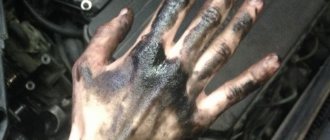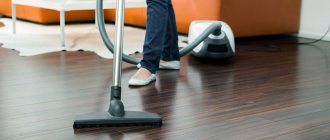A swimming pool is an excellent remedy for the summer heat and requires periodic maintenance. Not all owners know how to clean a pool, and most importantly, how to do it effectively, without spending a lot of time and to preserve the health of loved ones.
There are several methods for purifying both water and the structure itself. Why to clean your home pond, how to maintain hygiene and how to wash the walls and bottom, we will tell you in the article.
Choice of funds
After re-opening the pool, you need to clean its surface from lime deposits, traces of snow and ice, and carry out initial disinfection.
Professional and folk cleaning products will help you cope with this.
Professional products
Professional pool cleaning chemicals will help remove lime deposits and deposits. Many products have in common the presence of bleach, the duration of action and the fight against viruses.
WATER POOL Docker
Removes lime deposits, traces of rust, and grease deposits. Packaged in 5 and 11 kg. Option 1 costs about 2,000 rubles, option 2 – 3,000 rubles.
Advantages:
- Removing the water edging that forms after ice and snow.
- Harmless to the bowl.
- Disinfects the surface.
Flaws:
- High price.
- Needs to be heated for best effect.
- The product is dangerous if it comes into contact with skin.
MARKOPUL CHEMICALS Klin Bort
Cleans the walls and bottom of the pool. Effectively fights dirt, mucus and grease. A 3 liter canister costs between 1500 – 2000 rubles.
Advantages:
- Easily cleans the sides. After applying the product, just wipe them once with a cloth.
- The cost is lower compared to other professional products.
- Can be cleaned without water.
Flaws:
- Leaves marks if not wiped off quickly after application.
- Not suitable for surfaces that are not resistant to alkalis.
- The use of gloves and masks is mandatory.
Syntilor Piscina
Removes deposits of varying complexity. A 5 liter canister sells for around 1800 – 2000 rubles.
Advantages:
- Economical due to high concentration.
- Safe to use.
- Gently affects the surface of the pool.
Flaws:
- High price.
- To remove stagnant stains, you need to apply several times.
- Doesn't wash off well.
Folk remedies
Folk remedies differ from professional ones in their ease of processing and their accessibility. They help cope with frozen dirt after winter, plaque and stains. Some substances disinfect the walls and bottom of the bowl and kill germs.
A mixture of table salt and baking soda
3 kg of salt and 0.5 kg of soda are needed per cubic meter of water. The solution is poured into the bowl, after which the walls and bottom are cleaned with this water using a brush. The cost of the solution is 100 rubles.
Pros:
- Availability.
- Low price.
- Easy to use.
Minuses:
- Does not clean stubborn plaque.
- To clean, you need to fill the bowl.
- Does not disinfect.
Hydrogen peroxide
Cleans stubborn plaque and disinfects the surface. A liter of peroxide costs 200 rubles. For standard pools you need 5-7 liters of product. When using, you need to fill the bowl with water.
Advantages:
- Low cost.
- Easy to use.
- Peroxide is easy to find at a hardware store.
Flaws:
- Disinfection is conditional. The quality is inferior to bleach.
- Work only with gloves to avoid burns.
- Doesn't cope well with heavily ingrained plaque.
More information about peroxide for the pool here.
Sodium dichloroisocyanurate
Suitable for initial treatment of the pool before its launch. Contains 60% active chlorine. 4 kg. powders cost from 2500 rubles.
Advantages:
- Whitens the surface.
- Disinfects.
- Easy to find in stores.
Flaws:
- Price.
- Irritating to skin. You need to work with gloves.
- After use, the surface must be thoroughly treated.
Covering. Insulation
How to cover a frame pool? How to insulate? Water itself can retain heat for a long time. To keep it at the required level or accumulate, and also to keep the contents clean, it is recommended to cover the pool. The cover also prevents evaporation, which helps reduce chemical costs.
Let's consider several options for coverings for frame-type pools:
- Film covering.
- Trampoline cover.
- Polycarbonate covering, pavilion.
In this method, a solar heat-saving film with a bubble structure is laid on the surface of the water. The light one is used only to retain heat, the dark one absorbs sunlight, thereby slightly warming the water. As a result, water does not evaporate, heat does not dissipate in the air, and the bowl itself is protected from large debris.
In this case, a thick canvas is thrown over the pool, which is attached around the perimeter to special fixing bolts. This coating also helps maintain water temperatures, but is labor-intensive to install.
It is an arched aluminum structure with polycarbonate walls. How to cover a frame pool with polycarbonate? This structure can be applied to pools of any size and shape, and can be chosen in any color tone. The structure runs on rails located along the pool. Locking doors are built into it.
This option will allow you to not depend on the weather, protect against debris and animals getting inside, and with additional heating it will be possible to use the pool in the cold season. Among the disadvantages are the relative bulkiness of the structure, the need for preliminary preparation of the building surface on which the rails will be located, and the high price.
Step-by-step instructions on how to prepare your bowl for the season
At the end of the winter period, the pool needs to be re-opened and prepared for the warm season according to the following algorithm:
The water is drained from the bowl after the ice has completely melted. If there are ice blocks, it is not recommended to break them with a crowbar. This will damage the walls.- It is necessary to wash the pool, ridding it of debris and plaque.
Contaminants are removed using professional or folk remedies. It is prohibited to use metal brushes. - The plugs are removed and wiped.
- Installation of spotlights with preliminary cleaning of terminals. The power must be turned off.
- Installation of handrails and stairs after cleaning all threaded connections.
- Assembly of pumping and filtration equipment. The rubber seals must be intact. The pump terminals are lubricated with electrically conductive paste.
- Installation of disinfection equipment. The UV unit is switched to bypass to prevent contamination of the lamp housing.
- Filling with water a few centimeters above the skimmer.
- The filter barrel is washed several times.
- Checking the acidity values and bringing them to the desired level.
- The next day, vacuum the bottom of the pool and rinse the filter.
- Turning on the filtration system and ultraviolet installation.
Prevention measures
Before choosing pool cleaning products, you should pay attention to the types of contamination and take preventive measures. If you monitor the cleanliness and hygiene of the artificial reservoir, then there will be no need for special cleaning of the plumbing fixtures.
A swimming pool decorates a suburban area, saves you from the heat, and allows you to have fun in your free time with children and friends. However, it is worth remembering that a home pond is usually located in an open area and is therefore susceptible to external pollution. The wind blows sand, leaves, feathers, and insects into the water. In addition, vacationers themselves bring a lot of garbage with them: pieces of skin, sweat, cosmetics, hair. There is no need to explain why you need to wash before the pool.
The water in the pool is stagnant and under the influence of warm sunlight, small life develops well in the tank. The water may “bloom”: blue-green algae form on the water surface and walls of the bowl. In addition, using hard water can lead to the formation of limescale or rust deposits. Owners most likely will not want to swim in blooming, muddy or red water.
Water with algae
To prevent this from happening, you should follow simple rules for maintaining the pool:
- clean the water every time before swimming;
- install filters that purify and soften water at the inlet;
- take a shower before swimming;
- Check the pH level every week (should range from 7.0 to 7.4).
Advice! Complete cleaning of the pool and replacement of water must be done at least once a week. This will not only help maintain the aesthetic appearance of the artificial reservoir, but will also protect filters, pipes, and equipment from contamination and damage.
If the structure of the reservoir becomes dirty and it becomes impossible to swim in the water, then it is necessary to take cleaning measures.
List of other reactivation actions
Reactivation activities continue after the initial disinfection. They are necessary to ensure that water meets the required parameters.
Instructions:
- To prevent the appearance of algae, active chemicals are added to the water. After they are completely dissolved, the filters are turned off.
- Liquid coagulants are sprayed over the pool. They last for 24 hours.
- Using a water vacuum cleaner will collect the sediment.
- Backwashing cleans the filtration system.
Cleaning methods
Proper cleaning of pool surfaces means removing limescale, water stone, cleaning metal elements from rust, removing stains and various types of contaminants. Regular cleaning of surfaces using hand-held accessories and special devices allows you to maintain the cleanliness of the reservoir for a long time. But at least once a season the bowl requires general cleaning, which is carried out after draining.
For minor stains, the use of cleaning agents, brushes and manual force is sufficient. If limescale and stone deposits are significant, it may be necessary to use special devices to remove stubborn dirt, such as a rotary machine. You can do the work yourself or invite specialists to carry it out.
How to clean cloudy water?
Experts give recommendations on how to clean a pool when the water is cloudy. But first you need to understand why this happened. Causes of cloudiness:
- Excess pollen, saturation with fungi or dust, silt, which cannot be captured by sand filter elements. To eliminate the problem, it is necessary to use drugs - coagulants and flocculants. They bind micro-pollutants, forming flakes. Then they are vacuumed. Such drugs cannot be used in cartridges (filtrates).
- Saturation with dangerous microbes. To eliminate the problem, it is recommended to organize intensive treatment with a disinfectant.
- Purity is influenced by the biochemical composition of the liquid, acidity (pH), inclusion of minerals and inorganics. Here you should definitely consult with an expert in the selection of reagents.
Any problems can be eliminated by identifying the causes. Today there are a lot of methods for cleaning an artificial reservoir. The main thing is to choose the right solution. It is individual and depends on the capabilities of the pool owner. Knowing how to clean a frame pool, you don’t have to worry about the condition of the swimmers.
What to wash with
You can wash the pool bowl before filling it with water using any available means:
- rags;
- soft brushes;
- mops;
- rods with brushes and rags;
- automatic equipment;
- manually.
The main condition is that the walls of your water bowl are disinfected, sparkling clean and do not arouse suspicion.
It is better to repeat the washing procedure, then pour running water from a hose, which should be used to thoroughly rinse off all stains and chemical residues. Some summer residents use liquid soap, shampoos, and special surface cleaning products. This can also be done, but not every household chemical product has full antibacterial properties. Therefore, read the instructions and labels. Otherwise, your pool cleaning will be ineffective, and the water will require general cleaning within a week.
IMPORTANT! Do not use acidic and alkaline preparations at the same time! An acidic preparation can only be used after the alkaline has been completely removed from the surface, and vice versa! Do not use household chemicals containing ammonia or phosphates to clean the pool!
Features, tricks and tips from professionals for cleaning a swimming pool
A swimming pool is a complex hydraulic structure designed for water procedures, swimming, and simply for having a great time. In order to keep the pool clean, it must be washed periodically using special detergents and methods. The main problem of pollution is water hardness.
It is from this that plaque appears on the walls of the pool, and after that microorganisms, algae and other elements form in it. All of them have a detrimental effect on the health of the human body, and must be gotten rid of.
It is possible to wash the pool yourself, but to do this you need to take into account all its features, dimensions and the material from which the pool itself is made. This process is labor-intensive, but has its own tricks and little tricks, and here are a few of the most important ones:
- When purchasing a detergent, carefully study its characteristics and method of application so that you do not damage the pool coating;
- Rinse off the detergent with plenty of water to prevent corrosion that the cleaner may cause;
- If the pool has stainless steel parts, then it is better not to clean them with oxidizing agents, this will lead to coloration of the metal.
- It is better to treat limescale deposits monthly, this will lead to a lasting result and your pool will always be clean.
If you don’t want to do this yourself, you can entrust the care of your pool to the professionals of our company.

